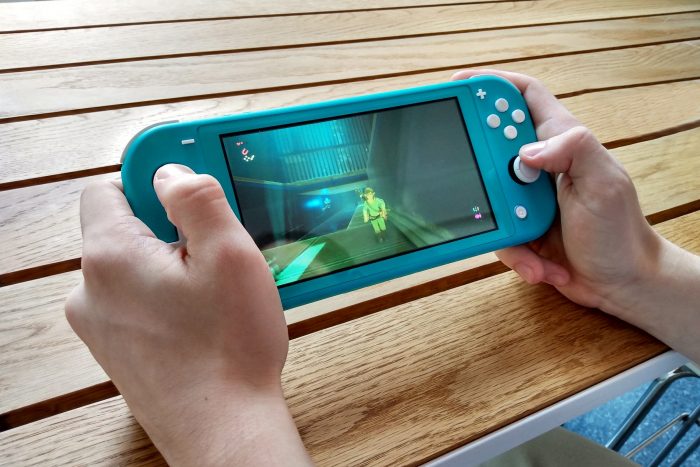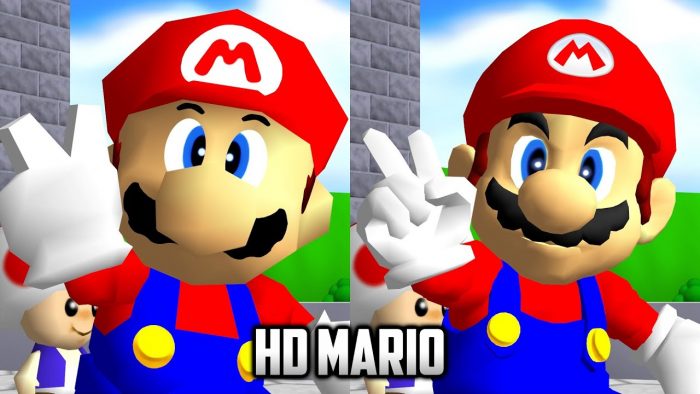For about a year, I was adamantly defending the Switch Lite. My friends bullied me for getting the “Switch that can’t switch”, or for getting the “only child console” because I had no one to play with.
I responded angrily. I had no TV to connect it to, so why would I want to? I could play it in bed, or on the toilet! It was lighter, cheaper, and more compact. What could be wrong with the Switch Lite!?
What could be wrong with the Switch Lite? Let me tell you.
Switch fever has existed since its launch, but it really picked up at the start of multiple national lockdowns around the world, coinciding with the mammoth release of Animal Crossing: New Horizons. It seemed like the perfect game at the perfect time, allowing us to escape to a world of menial tasks and waiting around while we were stuck at home. The Switch took over the world, and my wallet. Having invested at least £450 in a Switch Lite and its games, this is my warning to you, if you’re in the same position that I was in during March last year. Think very carefully before doing the same.
There is a really special novelty about ‘playing it on the Switch’. It was great to have a full-fledged, AAA, gaming experience in the palm of my hand. I explored the dungeons of Skyrim at 2am, in the comfort of my warm bed, and have sailed through the kingdoms of Super Mario Odyssey on dirty, smelly trains. It was great, but the novelty soon wore off. I couldn’t appreciate the vast expanse of Hyrule on a 5.5 inch screen, or get immersed in Fire Emblem’s Fodlan. It is great to be able to play anywhere, but I think that games should be designed for their platform. Portable games work best when they’ve been designed to be portable experiences. In the same way that you wouldn’t watch a film on your phone, I don’t think you should play Breath of the Wild on your lap.

As a student, I’m also on a pretty limited budget. I know that games are generally expensive, but Switch games are hardly ever reduced or on sale. I really appreciate that Nintendo neither rushes their employees into working long overtime hours, nor outsources their development to make their games cheaper, but buying a handheld experience for £50 or £60 doesn’t really work for me. I realise that this is a symptom of getting a Switch Lite rather than the full Switch, and is just an issue with my own very silly decisions.
Nintendo really know how to make games. That is indisputable. Every game that they’ve produced for the Switch has been up there with the best of its genre. Unfortunately, where they falter is basically in every other area.
Their paid online system is abysmal. The fact that you have to download and use a mobile app to use voice chat is testament to this. Or that Super Mario Maker 2, a simple 2D platformer, cannot handle 4 players on one course at once. Or that Super Smash Bros Ultimate, a competitive fighting game, relying on quick responses and button inputs, can barely hold together a match. Unrelated fact: in 2008, Resistance 2, on the PS3, on the free Playstation Network, hosted 60 players in complex 3D matches perfectly.
Nintendo might have had the chance to make up for this with the legacy content that comes bundled with a Nintendo Switch Online subscription, but the games they offer are so sparse, and come out so infrequently, that it verges on insulting. Currently there are around 90 NES and SNES games are available on the Switch. The Wii, which released in 2006, had 385. And not just NES and SNES games, but N64 games too. Coupled with the ability to play GameCube discs, you had 5 generations of Nintendo games to play on one console. Admittedly, a lot of the games on Nintendo’s Online Subscription are some of the greatest games ever – Super Mario World, Super Metroid, Zelda: A Link to the Past, Donkey Kong Country – but the fact that this is only a sliver of their output is both a testament to their consistent quality and a sad reminder of their current laziness.
Nintendo’s most recent Switch Online announcement revealed four new games coming to the platform: Doomsday Warrior, Psycho Dream, and Prehistorik Man for the SNES, and Fire n’Ice for the NES. Really? Nintendo probably has the greatest back catalogue of video games of all time, and they choose to re-release Prehistorik Man? It’s not as if releasing their more popular games would take them any effort at all. Emulating the Game Boy or Game Boy Advance is already possible – and relatively easy – on mobile phones. On the home console front, they already have all the software to facilitate bringing back N64 or GameCube games, as they’ve shown in the latest Mario collection 3D All-Stars. Porting them would be as easy as taking the ROM off one of their many digital shelves and running it through their program. Instead they’re saving them up to repackage and resell to unwitting fans.
On that note, if we compare Nintendo’s recent collections to industry standards, we’ll also see that their efforts are incredibly sub-par. The Mega Man Legacy Collection is £12 to buy on the Nintendo Switch right now. It contains full ports of Mega Man 1 through 6, a database of all the enemies, practice modes for fighting bosses, reworked challenge stages, a museum of concept art and sketches, and a separate soundtrack for each game.
Super Mario 3D All-Stars is £60 to buy, right now (before March 31st), and contains Mario 64, Super Mario Sunshine, and Super Mario Galaxy. And a soundtrack for each. It’s £60. The ports are also incredibly half-assed. Notably, Mario 64 retains a 4:3 aspect ratio, and has almost no graphical improvements.
The aspect ratio has been fixed, by fans, for free, years and years ago. The game also recently received a fan made PC port, which can upscale natively to 4K. Also free. Nintendo is one of the largest gaming companies in the world! They employ paid developers to make these games! And yet they’re so complacent that they outright refuse to produce anything with more effort than the absolute bare minimum.

There is a chance I’m just past it. Maybe buying a Switch Lite was my last attempt at reclaiming the fun I had with games as a kid. And there lies the genius of Nintendo’s marketing, because the Switch is so materially a toy. The brightly coloured plastic, rounded corners, cute pocketable size – it practically invites you to touch it, play with it, pick it up and feel it and shake it and press all the buttons. That doesn’t cheapen it; the build quality is leagues ahead of its predecessors, the greasy Wii remotes and stupid, stupid Wii U Gamepad.
Still, whilst the Switch is just a toy for big kids, all the adverts show you healthy, attractive, unexplainably wealthy 20-somethings pulling out their Nintendo Switches in front of their sophisticated friends, playing Mario Kart and Luigi’s Mansion atop verandas and buses in Rome, or London, or somewhere else. They’ve melded the basic childlike joy of gaming with that imagined sophistication of being an adult, touching on basically every target market. Little kids want to be older, adults want to be younger. We all want the Switch.
Now, if I want to get a hit of nostalgia, I’ll pick up my DS and boot up Pokemon Platinum. For anything else, I think my computer will do just fine.
